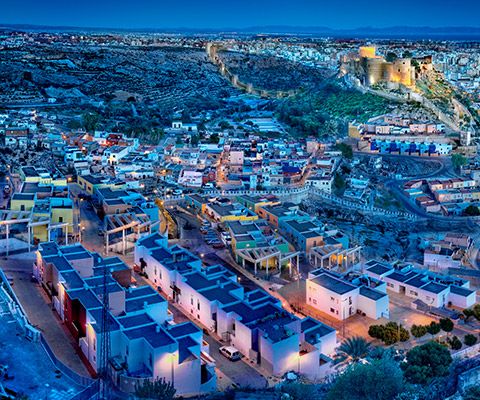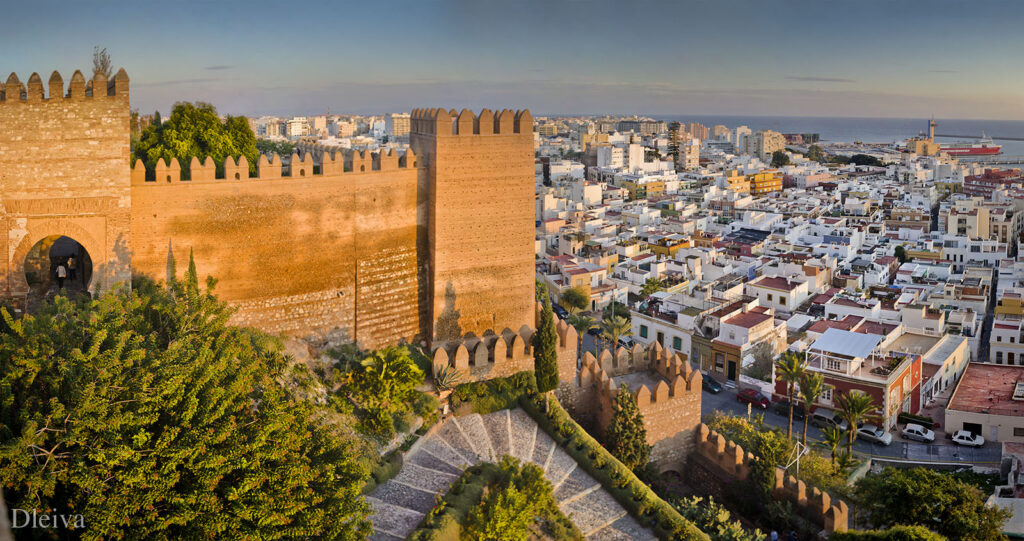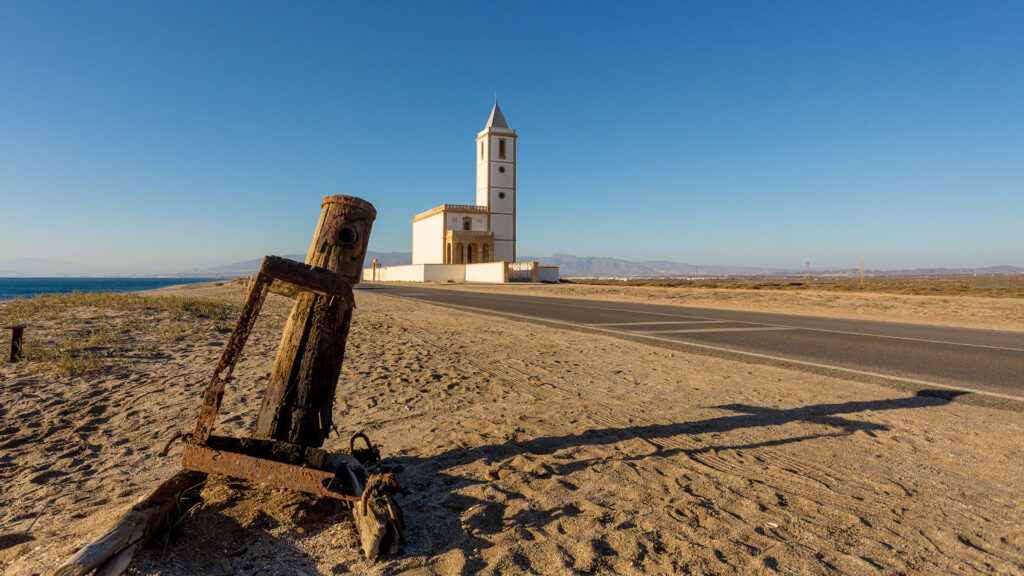Almería in 3 minutes
The Aljibe Neighbourhood (Al-Hawd)

This quarter, currently Pescadería-La Chanca, was the old Muslim quarter Al-Hawd, which means “water tank”. this name is given by the existence of a well in that period. The neighbourhood, stretched from the Avenida del Mar to the Barranco del Caballar, bringing together fishermen, sailors and merchants from the west point.
The neighbourhood Chanca, was developed from 1850, and the name means “place or store trap” where fishermen keep their gear and prepare them for fishing. In this neighborhood was the Jewish quarter, near the church of San Roque, until the expulsion of the Jews in 1492. According to Idrisi, was densely populated and well equipped with bathrooms, shops and inns.
This neighbourhood has formidable viewpoints of the city: The so-called “Barranco de Greppi” and the “Cerrillo del Hambre” can be accessed by the Cara street, one of the most typical streets, as is that of the Old Hospic
The Alcazaba Fortress

The Alcazaba, with its 1430 m. walled perimeter is Spain’s second largest Muslim construction, after the Alhambra Palace in Granada. It was built at the behest of Abderrahman III in the tenth century after the founding of the city. It is a stronghold which housed three campuses; the first two Muslims and one Christian, last built after the conquest of the city by the Catholic Monarchs, which occurred in 1489.
The fortress is situated on a hill, overlooking the old centre of the city, the medina. In it we find a first enclosure where there is a large garden and ponds constructed during the Muslim period.
The second area, the vast palatial residence of King Almotacín, stood during eleventh century. This consisted of a public area, where today are the caliphate wells of the tenth century, a Christian arch of the 16th century. Located in the residence of the first Christian governor of the city are two rebuilt houses, the Mudejar hermitage of San Juan, and a bathhouse rebuilt, amongst other buildings. In addition, the Government House or Palace reception area was located in the middle. At the top was the private area of the palace of King Almotacín. From this palace only remnants of private bathrooms and the only wall were left standing and which have been preserved, called “Mirador or Window of the Odalisque.” This contains a curious legend concerning the love affair between a Christian prisoner captive and favored slave of the king.
Finally, is the last enclosure of the fortress, Christian, and ordered to be built by the Catholic Monarchs, after the taking of the city. It is a Christian castle within the Muslim fortification. It is situated in a large courtyard, with three towers features: Keep, the Noria used for raising water and the Gunpowder store.
Cabo de Gata natural park

A unique climate, the volcanic origin of its soil and the diversity and uniqueness of the flora and fauna that is the fruit of the contrasts that exist between the marine, coastal and land environments, are the best letter of presentation for the Cabo de Gata Níjar geopark, the largest protected area on the Mediterranean coast.
The mountain range forms coves of great beauty that give rise to fifty kilometres of the best preserved rugged coast on the European Mediterranean. Urban beaches such as the one at San José and Aguamarga; magnificent natural beaches such as Mónsul and Los Genoveses; recondite and almost inaccessible coves such as Carnaje and Enmedio; spectacular volcanic cliffs and reefs such as Punta de los Muertos and Mesa Roldán. Excellent specimens of dune formations, both fossil ones, with white and grey sand –San Felipe de los Escullos and Las Amoladeras-, and ones in movement, which cause coastal spits that enclose lakes and create such attractive landscapes as the Salinas del Cabo de Gata, a humanised place that is exceptional for birds.
For more info. visit https://www.turismodealmeria.org/en/